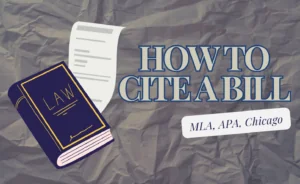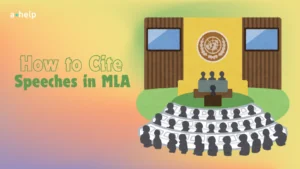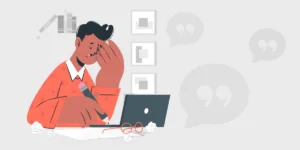When writing research articles and papers, the use of visual elements like images, diagrams, and tables can significantly enhance the presentation of data and arguments. However, you have to properly cite these elements to maintain academic integrity and respect copyright laws. This article guides you through the general rules and specific scenarios for citing images, with a focus on Harvard referencing, and explains how to list these references effectively.

✅ AI Essay Writer ✅ AI Detector ✅ Plagchecker ✅ Paraphraser
✅ Summarizer ✅ Citation Generator
Citing Images in Academic Works – General Rules
When you incorporate an image, table, or diagram into your academic work, it’s essential to provide a citation that includes the author, date, title, and source of the image. The purpose of citing images is to acknowledge the original creator and to allow your readers to trace the source material. This process typically involves two components: an in-text citation and a corresponding entry in the list of references.
For the list of references, the full citation of an image should include:
- the author’s name,
- the year of publication,
- the title of the image,
- and the internet address or publication where the image was found.
If the image is untitled, a brief description can be used in place of a title.
Citing and Referencing Specific Types of Images
Online/Digital Images. When citing an online image or diagram, the citation should include the author (if known), the date of creation (or the date it was accessed) for the in-text citation, and the title, and the internet address for full reference. The Harvard referencing system requires these details in both the in-text citation and the list of references.
In-Text Citation Example: “The cartoon by Frith (1968) humorously illustrates the political climate of the time, highlighting…”.
Reference Example: Frith J 1968, From the rich man’s table, political cartoon by John Frith, Old Parliament House, Canberra, accessed 11 May 2007, http://www.oph.gov.au/frith/theherald-01.html.
Online Images/Diagrams Used as Figures. Online images used as figures in your work should be properly numbered and include a figure caption. The figure caption typically consists of the figure number, a brief description, and an in-text citation.
For example: Figure 1: A diagram of the solar system (Smith, 2020).
Citing a Photograph or Image from a Museum or Institution (Viewed Online). In the case of citing photographs or images from museums or institutions viewed online, include the name of the artist, the year of creation, the title of the image, the name of the institution, and the internet address where the image was found. This type of citation recognizes both the creator of the work and the institution that houses it.
In-Text Citation Example: “The picture (Van Gogh) evokes a deep sens of..”
Example Reference: Van Gogh, Vincent. Starry Night. 1889. The Museum of Modern Art, www.moma.org/collection/works/79802.
Properly Citing a Photograph You Took. If you are citing a photograph that you took, the citation should include your name, the year the photo was taken, a title or descriptive caption, and a note indicating that it is your own work. For instance, in the Harvard referencing style, it would be: (Your Name, 2024, View of the Grand Canyon, author’s collection).
In-Text Citation Example: “The landscape’s stark beauty is captured in the photograph (Doe),” if the photograph was taken by a student named Jane Doe.”
Reference List Citation Example: Smith, Jade. Playing dogs. 21 Aug. 20010. Author’s personal collection.
The Differences of Citing Images in APA, MLA, and Chicago
Citing images in academic writing is an important practice for acknowledging sources and respecting copyright. The citation style varies depending on the format (APA, MLA, Chicago) and where the image was accessed (online, in-person). Here are general rules and unique examples for each style:
APA Style
Online Images:
- General APA Format: Author Last Name, Initials. (Year). Image title [Format]. Site Name. URL
- Reference Entry Example: Johnson, K. (2022). Sunset Over the Mountains [Photograph]. Unsplash. https://unsplash.com/photos/sunset-mountains
- In-Text Citation: (Johnson, 2022)
Images Viewed in Person:
- APA Format: Author Last Name, Initials. (Year). Image title [Format]. Institution Name, Location. URL (if applicable)
- APA Reference Entry Example: Monet, C. (1900). Water Lilies [Painting]. The Art Institute of Chicago, Chicago, IL, United States.
- APA In-Text Citation: (Monet, 1900)
MLA Style
Online Images:
- General MLA Format: Author Last Name, First Name. “Image Title.” Website Name, Day Month Year, URL.
- Works Cited Entry Example: Thompson, Alice. “Full Moon Reflection.” Pixabay, 5 Apr. 2022, https://pixabay.com/photos/full-moon-reflection-2022
- In-Text Citation: (Thompson)
Images Viewed in Person:
- General MLA Format: Author Last Name, First Name. “Image Title.” Year, Institution Name, City.
- Works Cited Entry Example: Van Gogh, Vincent. “Starry Night.” 1889, The Museum of Modern Art, New York.
- In-Text Citation: (Van Gogh)
Chicago Style
Online Images:
- Chicago Bibliography Entry Example: Smith, Robert. Morning Dew on Leaves. May 15, 2021. Photograph. Flickr. https://flic.kr/p/morning-dew-leaves
- Chicago Footnote: 1. Robert Smith, Morning Dew on Leaves, May 15, 2021, photograph, Flickr, https://flic.kr/p/morning-dew-leaves.
Images Viewed in Person:
- Chicago Bibliography Entry Example: Degas, Edgar. The Star. 1878. Pastel on paper, 73 x 60 cm. The Louvre, Paris.
- Chicago Footnote: 1. Edgar Degas, The Star, 1878, pastel on paper, 73 x 60 cm, The Louvre, Paris.
When citing images via a free citation machine, it’s important to include all necessary details such as the creator’s name, the title of the image, the year it was created or published, the format (e.g., photograph, painting), and its location or source. If the image is included directly in the text as a figure, a copyright/permissions statement should also be provided. Following these guidelines allows proper attribution and enhances the credibility of your academic work.
Conclusion
Accurately citing images, whether sourced online, from a database or taken personally, is a critical aspect of academic writing. Now, that you know how to cite an image, you can move on to bigger things and learn how to cite Youtube videos. It upholds academic integrity and shows respect for the original creators of these visual elements. By following these guidelines and using the Harvard referencing system, you can be sure that your use of images, tables, and diagrams adheres to the best practices of academic writing, making your work credible and ethically sound. Remember, a well-cited image not only adds value to your argument but also enhances the overall quality and reliability of your academic work.
FAQ
Follow us on Reddit for more insights and updates.





Comments (0)
Welcome to A*Help comments!
We’re all about debate and discussion at A*Help.
We value the diverse opinions of users, so you may find points of view that you don’t agree with. And that’s cool. However, there are certain things we’re not OK with: attempts to manipulate our data in any way, for example, or the posting of discriminative, offensive, hateful, or disparaging material.